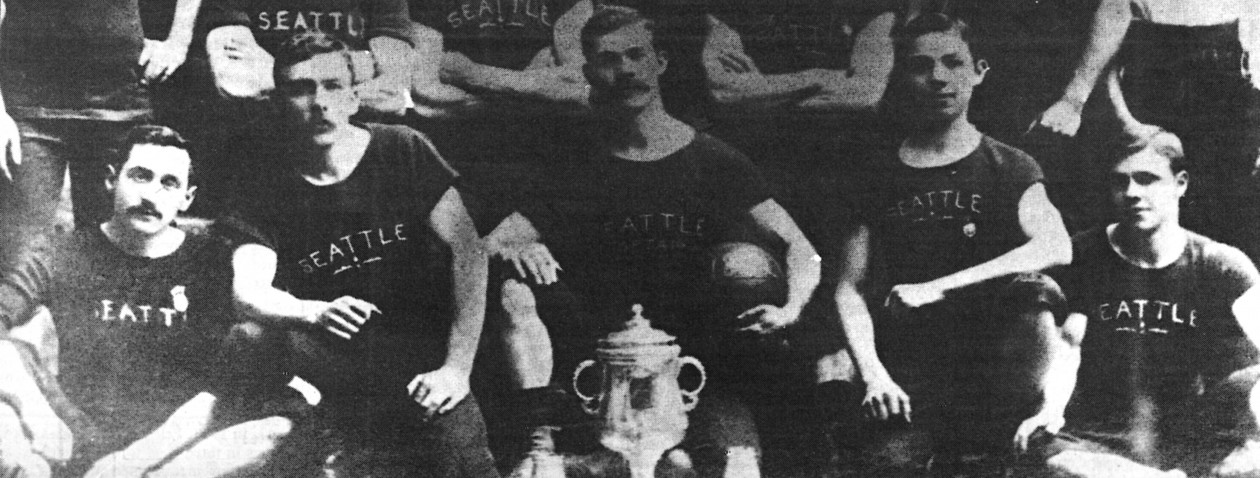Just completed was SuperDraft week across MLS. And that woosh you feel is the collective sigh of purists who only wish to be awakened from their offseason slumber for news of a DP signing.
The merits of a draft must be examined on two levels: competitive and fan interest. Does it help: a) identify and, b) distribute top talent to create parity? And does it satiate diehard fans’ appetite and/or attract new fans to the game?
The Draft as Hype
 Of course, the SuperDraft piggybacks on the United Soccer Coaches (formerly NSCAA) Annual Convention and the vibe that comes from 11,000 soccer types gathering together under one roof. Before it joined the coaches’ festivities, the draft was conducted via conference call, and some might say that was just as well. That’s no slam; neither baseball nor hockey drafts are must-see events, either.
Of course, the SuperDraft piggybacks on the United Soccer Coaches (formerly NSCAA) Annual Convention and the vibe that comes from 11,000 soccer types gathering together under one roof. Before it joined the coaches’ festivities, the draft was conducted via conference call, and some might say that was just as well. That’s no slam; neither baseball nor hockey drafts are must-see events, either.
Perhaps the closest a SuperDraft came to making front-page news was 2004. No, not because Clint Dempsey and Chad Marshall went in Round One. Stealing the show, rather, was DC United adopting 14-year-old then-phenom Freddy Adu. Otherwise, unless it’s an expansion team making its first mark, most markets register a collective ‘meh.’
Of late, the best in-house buzz came from the Sons of Ben making a scene at the 2010 festivities in Philly–a big cheer for the then-expansion Union tapping Danny Mwanga No. 1 that day. Back in Philadelphia this past Friday, the SoBs were reprimanded for colorfullly expressing their views on saving the Crew. Otherwise, nothing approaching the level of New Yorkers’ vitriol over NFL and NBA picks.
Finding Talent
There’s rarely much name recognition with top prospects and while vast majority of Rookie of the Year candidates are top-10 picks, homegrown signings are increasingly diminishing the draft’s importance.

Sounders FC, for instance, has drafted 36 players since 2009. Only two-thirds of those signed or got an extended look. Eleven have seen action in an MLS match. Steve Zakuani, the No. 1 overall pick, remains the only draftee to earn a regular starting role as a rookie. Roldan has, of course, grown in stature over his first three seasons, earning a key starting role and national team caps. Hopefully Cristian’s brother Alex, Seattle’s Chosen One in 2018 will follow suit, but there are few sure things.
Of Seattle’s seven first-round selections through 2017, four have appeared in 80-plus league matches; the other three total zero minutes. Of all the draftees, Servando Carrasco, a second-rounder, has proven to be the most experienced journeyman. It’s taken him to 126 appearances (77 starts), but he’s had to pick up and move five times. This winter Carrasco left Orlando for a reunion with Sigi Schmid in L.A.
Meanwhile, Seattle’s first eight homegrown signings have all seen league action. Blazing a path, DeAndre Yedlin, quickly progressed from Seattle starter to World Cup selection to Tottenham transfer target. Arriving amidst Hermann trophy fanfare, Jordan Morris claimed 2016 rookie of the year honors.
History’s Repeating Itself
What’s surprising is that history is beginning to repeat itself, in Seattle, anyway. Initially, the NASL Sounders used the draft to cast a wide net for young American talent. Yet the best signings came from their backyard.
Forty years before YouTube and south Florida combines, preparing for the NASL draft was largely confined to leafing through Soccer America and phoning the landlines of a few well-connected college coaches. It was unscientific, to say the least.

As it turned out, Seattle chose wisely. The Sounders’ very first pick in the 1974 draft, Dave D’Errico of little Hartwick College, signed and became a part-time starter by his second season. He would play over 120 league games. But D’Errico turned out to be the exception.
In 1976, 19-year-old Jimmy McAlister was signed out of the state league; a year later he was not only starting but rookie if the year. Plucked out of Tacoma high schools two years later, Mark Peterson and Jeff Stock were becoming young legends in their own right by age 20. Brian Schmetzer, incidentally, was not drafted but rather signed outright.
Finally there was the blockbuster class of 1982. The Sounders might have just signed them but instead Chance Fry, Bill Crook and Tim Bartro matriculated through the draft process. Combined, they played professionally for 49 years. Schmetzer was still kicking after 15 seasons, indoors and out.
Dissing on the Draft
None of the aforementioned were brought aboard with much fanfare. Always a showman, then-Tacoma Stars coach Alan Hinton once attempted to draft Brian Bosworth. You’ve got to hand it to him, it earned some headlines (and also a rebuke from the league commissioner, who nixed it).

Historically, young North Americans found it much more difficult to make it in the NASL. The talent gap between college-trained rookies and foreign veterans was greater and American coaches were scarce. Early on, the likes of McAlister toiled in reserve team games before contending for significant roles.
Each is an individual case, but ultimately in both the NASL and MLS era homegrown signings have proven more significant than draftees.
MLS clubs have already surpassed 30 homegrown signings since the 2017 season ended, the Sounders’ Handwalla Bwana among them. At the same time, coaches were dissing the draft. This year, there was a combined 11 passes in the final two rounds–more than the previous two years combined. Among those was DC United foregoing the Seattle pick exchanged in the Lamar Neagle deal.
Is it time to begin plotting the SuperDraft’s endgame? It was once a six-round affair; shall it be further trimmed to two? And will it ever go away completely? Clearly there’s enough grist for discussion.

